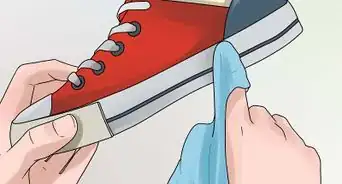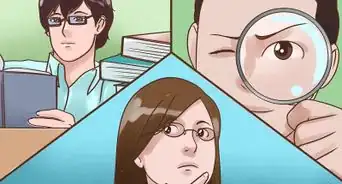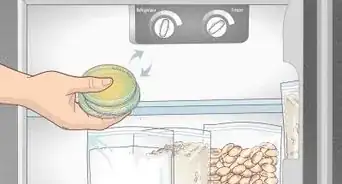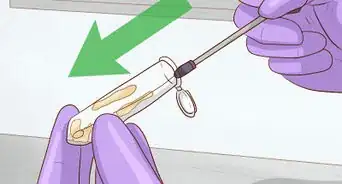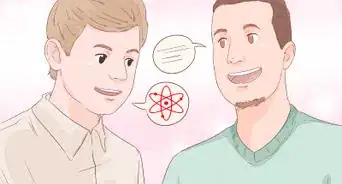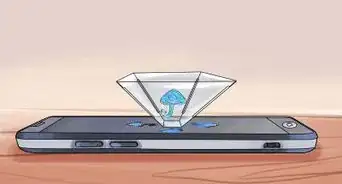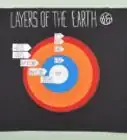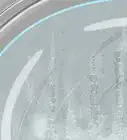This article was co-authored by wikiHow Staff. Our trained team of editors and researchers validate articles for accuracy and comprehensiveness. wikiHow's Content Management Team carefully monitors the work from our editorial staff to ensure that each article is backed by trusted research and meets our high quality standards.
There are 7 references cited in this article, which can be found at the bottom of the page.
This article has been viewed 840,909 times.
Learn more...
If you want to make a homemade 3D hologram, it's easier than you think. Every year, thousands of hobbyists, students, and teachers make holograms at home, work, or school. To make a hologram, you'll need some basic holography supplies and household items, a quiet and dark room, and about 30 minutes to process the image. With time and a steady hand, you'll be able to create your own professional hologram!
Steps
Setting up the Materials
-
1Buy the required materials online or from a film store. Before starting your project, gather all of the required materials so you know you'll be able to make and process the hologram. Purchase all of the following materials from a specialty film store or online:
- Holographic film plates
- Red holography laser pointer (preferably adjustable)
- Holography processing kit
- Safety goggles
- Thick rubber gloves
- Large hardcover book
- Metal tongs
-
2Choose a solid, shiny subject for your hologram. Subjects that are translucent, plastic, or made of furs or fabrics tend to warp in image form. For the clearest image, use a solid metal or porcelain object that reflects light and is no larger than your holographic film plate.[1]
- A coin, for example, would make an excellent hologram subject. A teddy bear would not.
Advertisement -
3Find a dimly-lit room to make your hologram in. Holograms develop best in darkness because the contrast between the object and its surroundings will be greater when it is illuminated. Turn off all the lights in your developing room and, if applicable, cover any windows or other sources of natural light.[2]
- Avoid rooms with creaky floorboards, loud air currents, or other sudden noises, as even slight vibrations can tamper with the hologram's image. Rooms with tile, concrete, or carpet flooring are ideal.
- Until you're ready to illuminate the object with the laser pointer, you do not need to turn off the lights.
-
4Lay your object down on a sturdy table. Choose a table that will hold your object firmly and does not creak or wobble. If you can't find a sturdy table, flat concrete or tile floors can work as an alternative.[3]
- Glue your object to a wood or metal platform against the table if you're worried about your object moving on its own.
-
5Put on safety goggles and a pair of rubber gloves. The chemicals in the processing kit may be toxic in their dry, undiluted form. Wear safety goggles and thick rubber gloves to protect your eyes and skin while handling the processing kit.
- Never touch the processing chemicals without your gloves and goggles on to prevent injuries.
- If you're sensitive to chemical smells, wear a dust mask or respirator while you work.
Positioning the Laser Pointer
-
1Set up your red holography laser pointer. Use a clothespin to secure the laser pointer to a plastic stand. Set the stand on the sturdy surface about 1–2 ft (0.30–0.61 m) from the object you want to capture.[4]
- To prevent eye injuries, never look directly into the laser pointer's beam or point the beam at another person.[5]
-
2Adjust the laser beam until the subject is fully illuminated. Turn on the laser pointer and point it directly at the object. Adjust the beam until it hits the object directly and illuminates as much of the object as possible.
-
3Turn off all of the lights in the room. Switch off the main lights and block all direct or natural light from entering the room. The room should be dark enough that you cannot read print to successfully process a hologram.
- If your eyes have a hard time adjusting to the dark, plug in a small nightlight underneath the table.
Capturing the Holographic Image
-
1Block the laser beam temporarily with a book or other blocker. Set up a hardcover book or other large, flat item between the laser pointer and the object to block the beam. This will function as a "camera shutter" of sorts while capturing the holographic object's image.
- If you use an alternative item to the hardcover book, choose a completely solid object. Transparent or translucent objects will not block the laser beam.
-
2Lean a holographic film plate against the object. Remove a holographic film plate from your supplies and position it carefully against the object. If the film plate is not thick enough to stand on its own, prop it up with plastic stands on both sides.[6]
- Let the holographic film plate settle for about 10-20 seconds before starting the image capturing process.
- Store the holographic film plates in a covered box until you're ready to use them for the sharpest image.
-
3Lift the object blocker about 1–2 in (2.5–5.1 cm) above the table. The book should still block the laser light from reaching the plate at this stage. Hold the book in this position for about 10-20 seconds, waiting for any slight table vibrations to subside before you continue.[7]
- Move slowly to prevent table vibrations or sudden noises, which can warp the hologram's image.
-
4Raise the object blocker out of the way for about 10 seconds. For about 10 seconds, remove the object blocker so that the laser beam hits the holographic film plate. After 10 seconds, lower the book again to cover the laser beam.[8]
Processing the Holographic Plate
-
1Mix the holographic processing chemicals according to the kit instructions. Mix the processing powders in transparent bowls to dilute the powerful chemicals. Read the packaging instruction carefully and add the directed amounts of water and solution mixes in separate bowls, stirring carefully with a thin, metal object.
- Do not stir different solution mixes together unless directed by the packaging. Follow the packaging instructions carefully to prevent potential accidents.
- Again, always wear safety goggles and thick rubber gloves while handling processing chemicals.
- Most kits should include a developer and bleach solution for processing the hologram. Each should be mixed separately.
-
2Dip the hologram in the developing solution for 30 seconds, then rinse it. Use metal tongs to wiggle the hologram back and forth in the solution without exposing your hands to chemicals. After 30 seconds, rinse the hologram in a bowl of lukewarm water for about 30 seconds.[9]
-
3Repeat this process with the bleach solution. Grip the object with the metal tongs again and swish it slowly back and forth in the bleach solution for 30 seconds. After 20 seconds have passed, rinse the hologram again in lukewarm water for about 30 seconds.[10]
- Unless the instructions say otherwise, it is safe to use the same water bowl for rinsing both solutions.
-
4Dry the holographic plate against a wall. Prop the holographic plate up vertically against the wall and place a paper towel beneath it to catch drips. Let the plate air dry in darkness, leaving it undisturbed until it is dry to the touch.
- The plate should take between 2-3 hours to dry completely, depending on the size.
-
5Inspect the hologram's images for imperfections. After the plate dries, expose it in direct light to inspect your completed hologram. If you're satisfied with the finished image, you have successfully made a hologram.
- If you're not satisfied with the hologram's image, repeat the process with a new film plate or contact a professional holographer.
- Don't be discouraged if your first hologram doesn't turn out as expected. Like all hobbies, making high-quality holograms takes time and practice.
Community Q&A
-
QuestionHow does a hologram work?
 Community AnswerA hologram captures a representation of the light passing through the imaging plate on its way to the viewer. The hologram captures the light before it is focused, and thus contains information about the light from many points of view. The way this information is captured involves light wave interference patterns using lasers. The light wave interference pattern is recorded by the silver halide crystals.
Community AnswerA hologram captures a representation of the light passing through the imaging plate on its way to the viewer. The hologram captures the light before it is focused, and thus contains information about the light from many points of view. The way this information is captured involves light wave interference patterns using lasers. The light wave interference pattern is recorded by the silver halide crystals. -
QuestionHow do I make a 4D hologram?
 Community AnswerYou can't. D refers to dimension and we live in a 3-dimensional universe so a fourth dimensional hologram is impossible.
Community AnswerYou can't. D refers to dimension and we live in a 3-dimensional universe so a fourth dimensional hologram is impossible. -
QuestionCan you use a picture for a hologram?
 Community AnswerYes, as long as you do everything else right. You should try using something else before, that way you can get the hang of it first.
Community AnswerYes, as long as you do everything else right. You should try using something else before, that way you can get the hang of it first.
Warnings
- Work with a careful, steady hand while making the hologram. Even small, accidental movements can tamper with your hologram's look.⧼thumbs_response⧽
- The chemicals used while processing holograms can be toxic in their undiluted form. If you are a child or teenager, adult supervision is highly recommended to prevent injuries.⧼thumbs_response⧽
Things You'll Need
- Holographic film plates
- Red holography laser pointer (preferably adjustable)
- Holography processing kit
- Bright, hard object
- Safety goggles
- Thick rubber gloves
- Large hardcover book
- Metal tongs
- 6 1 inch (2.5 cm) bottles of distilled water
- Nightlight (optional)
- Metal or wooden platform (optional)
- Glue (optional)
- Respirator or dust mask (optional)
References
- ↑ https://opg.optica.org/ao/fulltext.cfm?uri=ao-57-1-A150&id=379303
- ↑ https://cdn.dal.ca/content/dam/dalhousie/pdf/faculty/science/imhotep/7.8%20Making%20a%20Hologram.pdf
- ↑ https://www.youtube.com/watch?v=_-_qcy_wWtE&feature=youtu.be&t=28
- ↑ https://www.youtube.com/watch?v=_-_qcy_wWtE&feature=youtu.be&t=29
- ↑ http://www.laserpointersafety.com/FAQ/FAQ.html
- ↑ https://www.youtube.com/watch?v=_-_qcy_wWtE&feature=youtu.be&t=40
- ↑ http://www.wired.co.uk/article/how-to-make-a-hologram-at-home
- ↑ http://www.wired.co.uk/article/how-to-make-a-hologram-at-home
- ↑ http://www.wired.co.uk/article/how-to-make-a-hologram-at-home
About This Article
To make a hologram, put your object on a table and position a red holographic laser 12 in (30 cm) away, making sure the object is fully illuminated. Next, turn off the lights and block the laser light from reaching the object with a book. Then, lean a holographic film plate against the object and wait 10-20 seconds before lifting the book. Expose the plate and object to the laser light for 10 seconds, then process the plate according to the kit's instructions and let it air dry. To learn more about how processing works, read on!
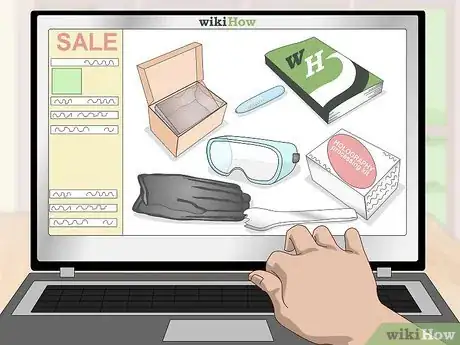
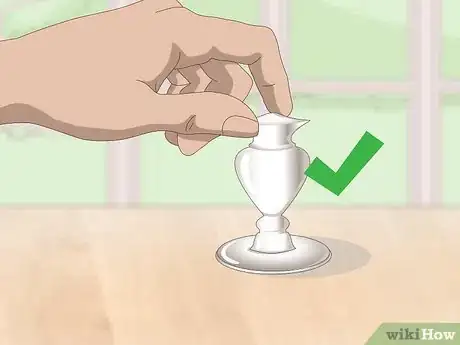
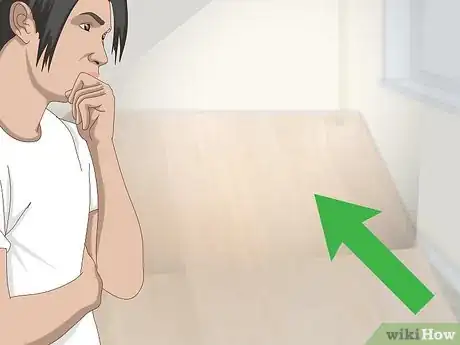

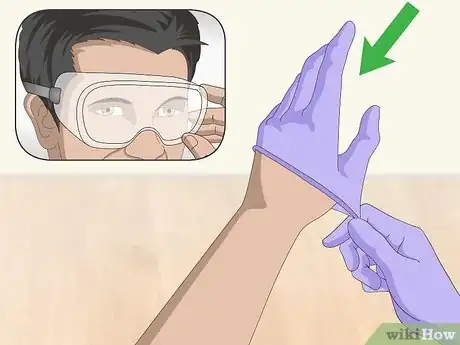
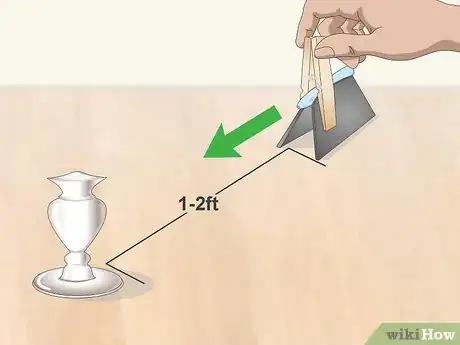
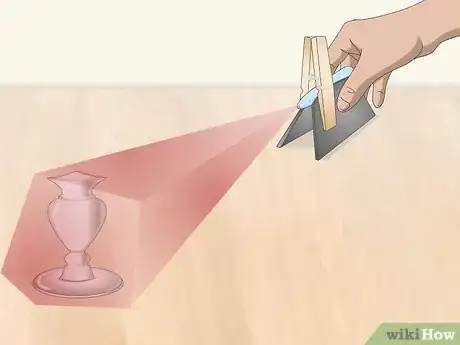
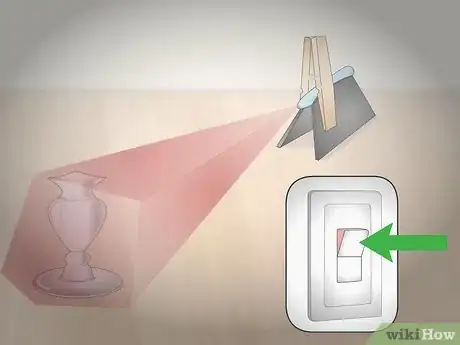
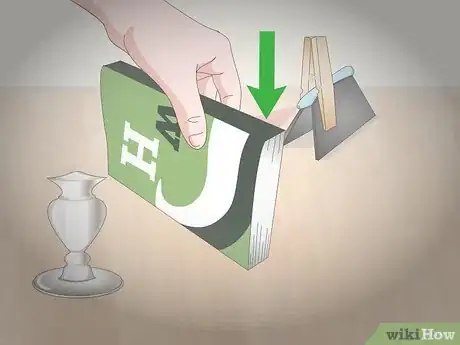
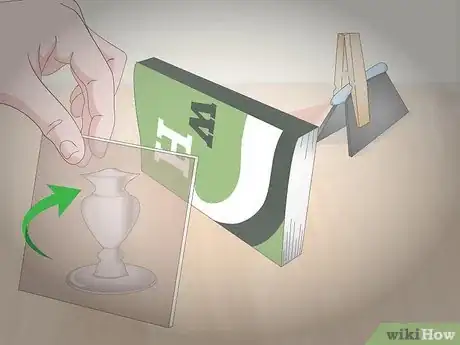

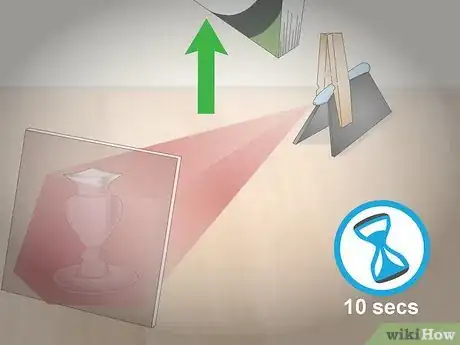
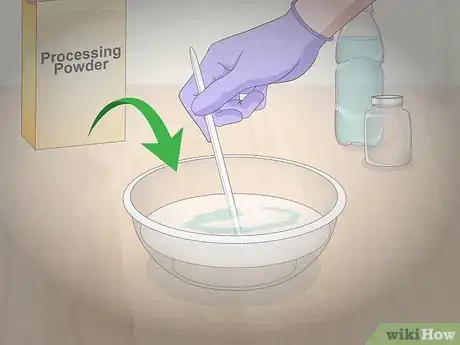
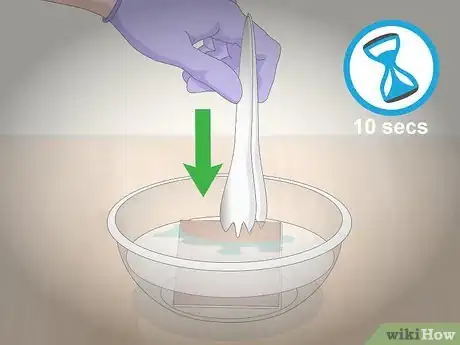
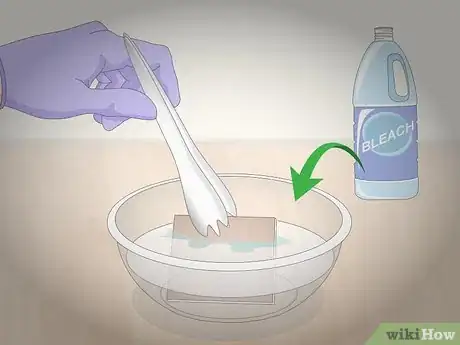
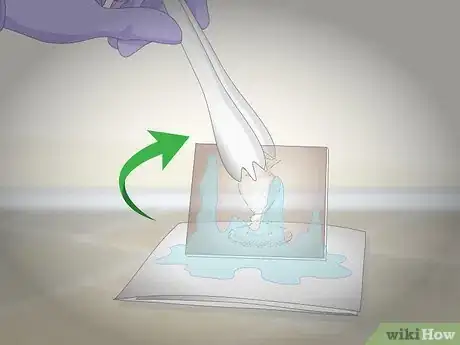
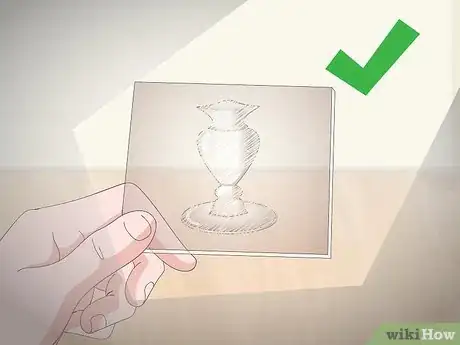
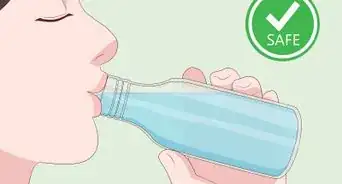
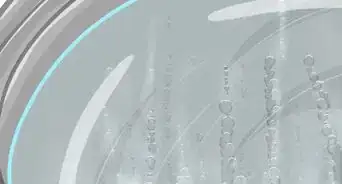
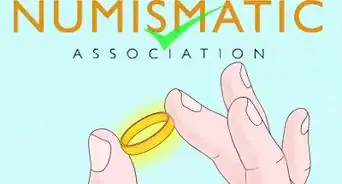
-Electric-Shock-Step-9.webp)

